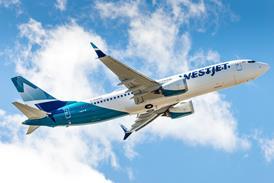For Lockheed Martin, 2000 was the year in which the USA's largest defence contractor regained the confidence of its customers and shareholders. "We met our objectives," says chairman and chief executive Vance Coffman, pointing to record orders, backlog and cashflow.
"Our recovery strategy has worked. We have restored our performance to the level customers and shareholders expect," says Coffman. "Now our strategy is to stay focused on our core systems integration business as we transition from recovery to sustained, disciplined growth."
After leading US industry consolidation, Lockheed Martin saw its post-merger programme and financial performance sink to all-time lows. Key to restoring customer satisfaction has been programme performance, and Coffman says 95% of the 549 "mission success events" planned for 2000 were achieved.
Shareholder confidence has been restored by the company's success in generating cash and paying down debt. Record 2000 cashflow of $1.8 billion helped reduce debt-to-capital ratio from 64% to 54%. The aim is to get below 50% as soon as possible.
All Lockheed Martin's sectors were up last year. Aeronautics booked almost $10 billion in F-16 orders, Space Systems secured new satellite and launch contracts, and Systems Integration won key information technology and tactical missile business.
While 2000 "proved we know how to win and execute programmes", says Coffman, 2001 "sets the pace for the next five years". The company is pursuing 41 programmes worth more than $33 billion, many of which it considers "game changing", such as the US/UK Joint Strike Fighter.
Another is missile defence, says Coffman, citing the PAC-3 missile and Theater High-Altitude Air-Defence system, both of which passed key milestones last year. This year, Lockheed Martin is looking for the international Medium Extended Air-Defence System programme finally to get under way.
While focusing on its core government systems integration market, the company is mining its technology portfolio for growth opportunities. "Technology mining is showing promise," says Coffman. This involves licensing a technology to a new entity funded by venture capitalists, in exchange for an ownership interest.
Eleven such ventures have been created so far, and Coffman foresees another three or four a year. "The near-term goal is to develop a portfolio of significant equity positions with minimal financial investment," he says. "The long-term goal is to increase shareholder value."
| LOCKHEED MARTIN – NO 1 IN DEFENCE | |
| Sales (2000) | $25.3 bn |
| Systems Integration | $9.6 bn |
| Space Systems | $7.1 bn |
| Aeronautics | $4.9 bn |
| Technology Services | $2.3 bn |
| Growth target | 15-25%/year (EPS*) |
| Cashflow (2000) | $1.8 bn |
| Debt: capital | 54% |
| * earnings per share | |
Source: Flight International























